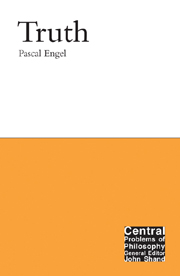1 - Classical theories of truth
Summary
A preliminary map
Before examining various classical philosophical conceptions of truth, let us try to characterize the main features of our naïve, commonsensical conception of it. We have a predicate, “true”, in all languages1 (wahr, vrai, verum, alèthès, pravdy, etc.), which we apply to all sorts of items – thoughts, beliefs, judgements, assertions, ideas, conceptions, views, theories, and so on – which seem to refer to the contents of our thoughts, which are abstract, or a least nonconcrete, entities. We apply, however, this predicate also to concrete things, such as pictures, artefacts, pieces of currency, or even living animals. For instance we say that this is a true drawing by Poussin, that this is a true copy of a document, a true 50 euro banknote, a true piece of artillery or a true Irish setter. In such cases, the meaning of “true” seems to be the same as “authentic”, “real”, “faithful”, “exact”, or “conforming to” a model or a type. Sometimes too we employ “true” to characterize other sorts of properties, such as character traits, when for instance we talk of a true friend, meaning that the person is loyal or trustworthy.
All these meanings, however, seem to derive from two basic ones: “true” as a property of an item that makes it genuine, natural or real, as opposed to contrived, artificial or fictional; and “true” as a relation between some item to which the predicate is attributed, and some other item which makes true the first item.
- Type
- Chapter
- Information
- Truth , pp. 9 - 40Publisher: Acumen PublishingPrint publication year: 2002



